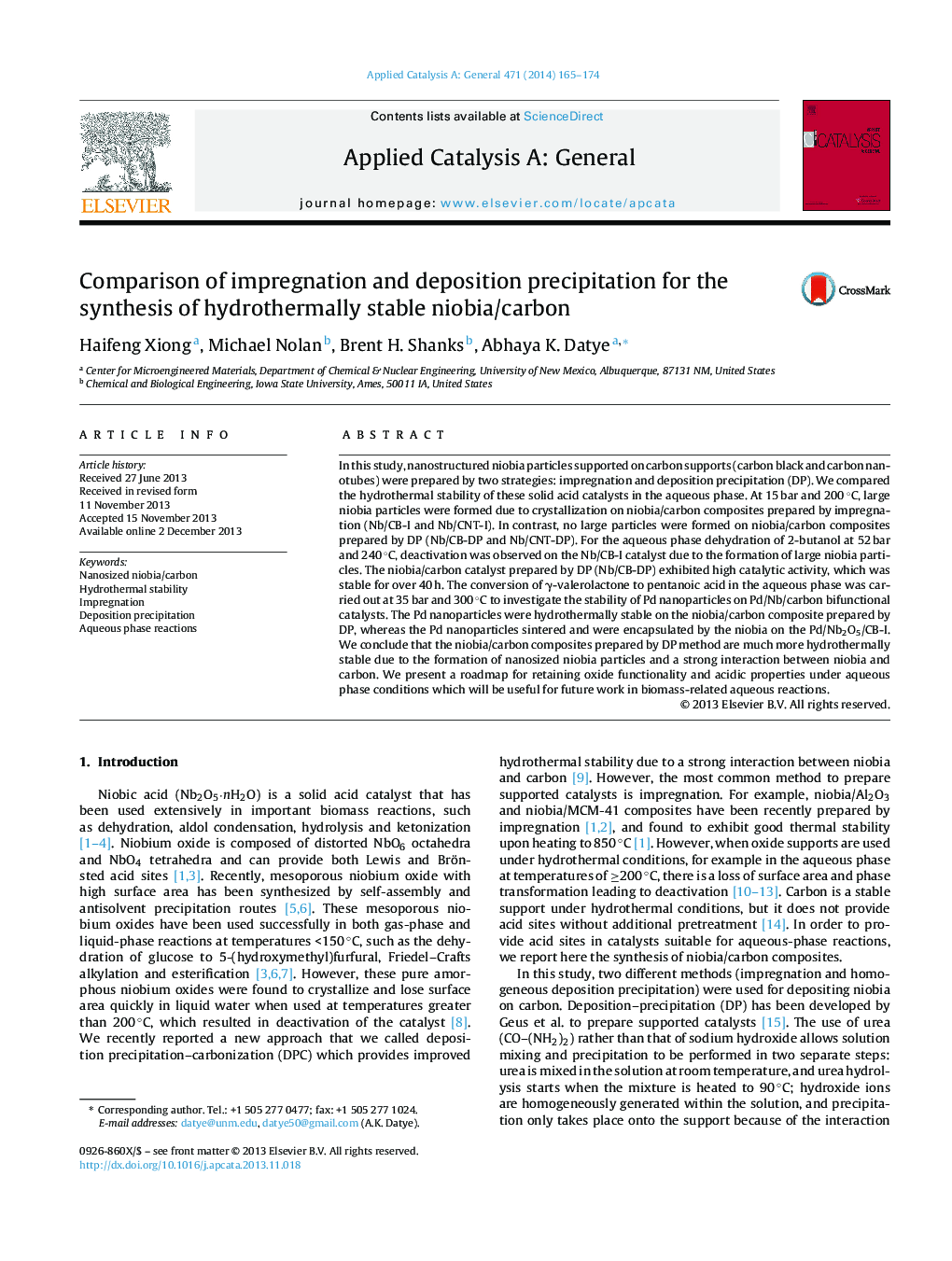| Article ID | Journal | Published Year | Pages | File Type |
|---|---|---|---|---|
| 39914 | Applied Catalysis A: General | 2014 | 10 Pages |
•Nanosized niobia particles on carbon were prepared by impregnation and deposition precipitation (DP).•In aqueous phase, large niobia particles were formed on niobia/carbon prepared by impregnation.•No large particles were formed on niobia/carbon composites prepared by DP.•Pd nanoparticles were hydrothermally stable on niobia/carbon prepared by deposition precipitation.•Pd nanoparticles sintered and were encapsulated on niobia/carbon prepared by impregnation.
In this study, nanostructured niobia particles supported on carbon supports (carbon black and carbon nanotubes) were prepared by two strategies: impregnation and deposition precipitation (DP). We compared the hydrothermal stability of these solid acid catalysts in the aqueous phase. At 15 bar and 200 °C, large niobia particles were formed due to crystallization on niobia/carbon composites prepared by impregnation (Nb/CB-I and Nb/CNT-I). In contrast, no large particles were formed on niobia/carbon composites prepared by DP (Nb/CB-DP and Nb/CNT-DP). For the aqueous phase dehydration of 2-butanol at 52 bar and 240 °C, deactivation was observed on the Nb/CB-I catalyst due to the formation of large niobia particles. The niobia/carbon catalyst prepared by DP (Nb/CB-DP) exhibited high catalytic activity, which was stable for over 40 h. The conversion of γ-valerolactone to pentanoic acid in the aqueous phase was carried out at 35 bar and 300 °C to investigate the stability of Pd nanoparticles on Pd/Nb/carbon bifunctional catalysts. The Pd nanoparticles were hydrothermally stable on the niobia/carbon composite prepared by DP, whereas the Pd nanoparticles sintered and were encapsulated by the niobia on the Pd/Nb2O5/CB-I. We conclude that the niobia/carbon composites prepared by DP method are much more hydrothermally stable due to the formation of nanosized niobia particles and a strong interaction between niobia and carbon. We present a roadmap for retaining oxide functionality and acidic properties under aqueous phase conditions which will be useful for future work in biomass-related aqueous reactions.
Graphical abstractFigure optionsDownload full-size imageDownload high-quality image (381 K)Download as PowerPoint slide
